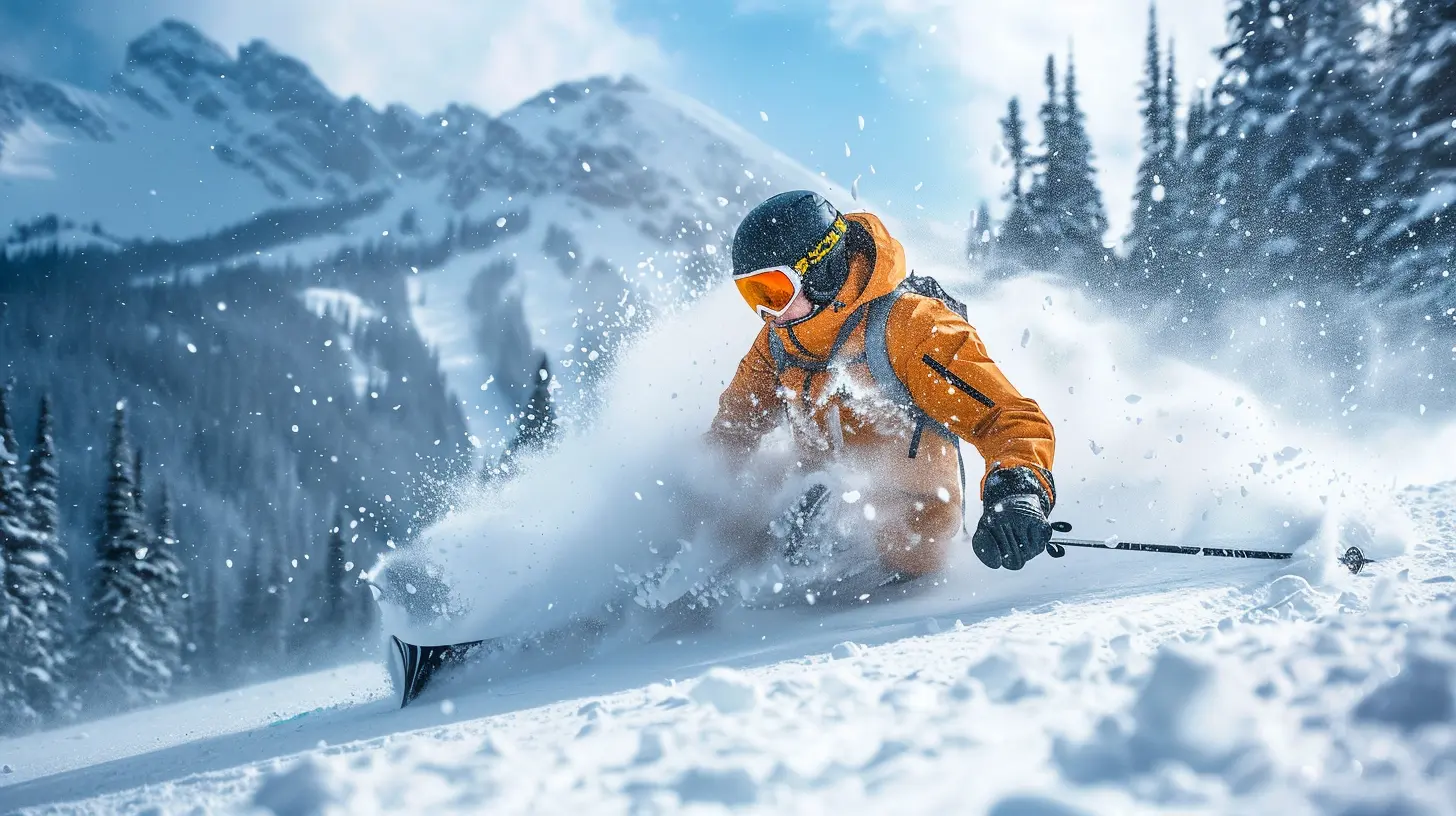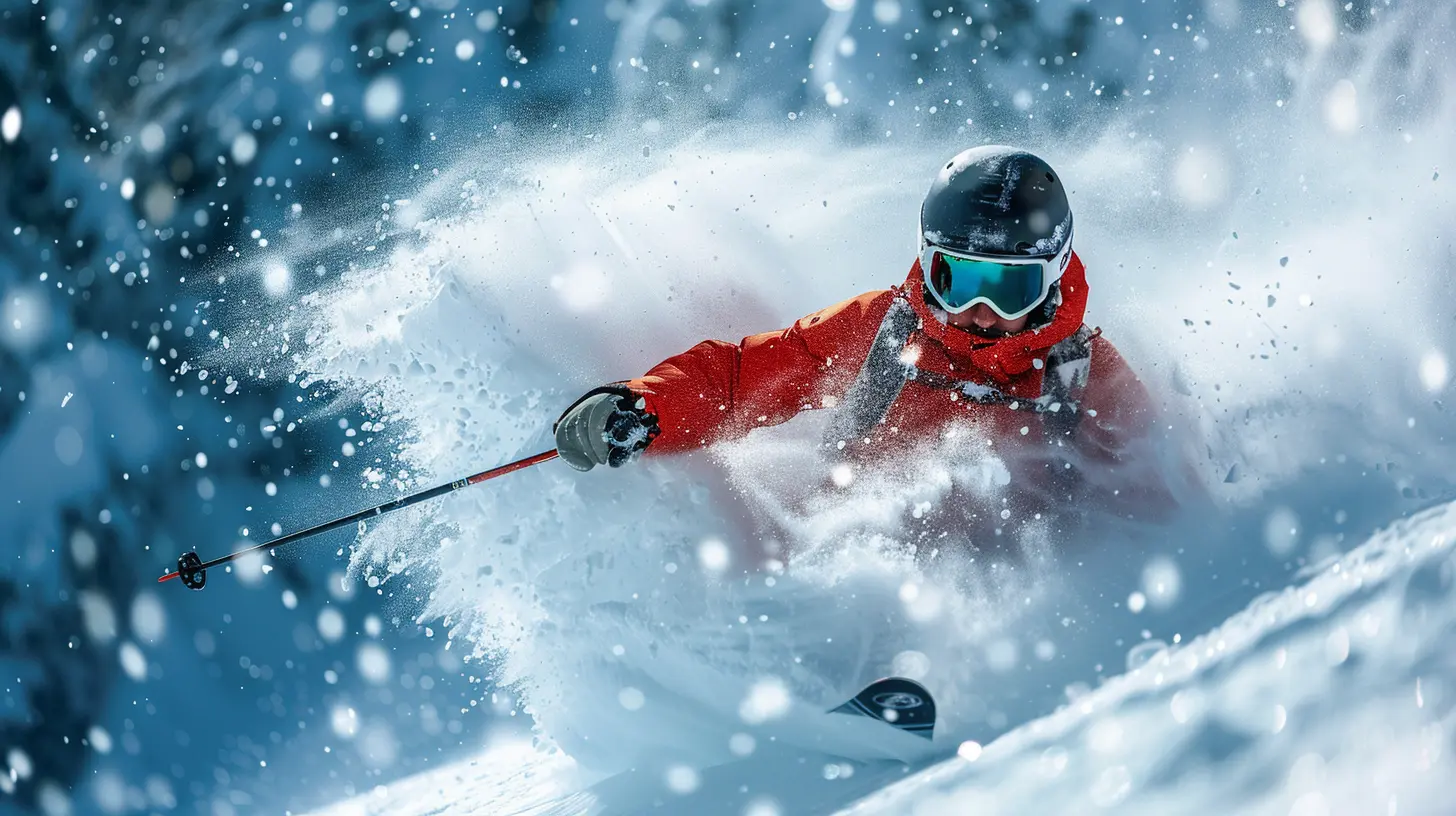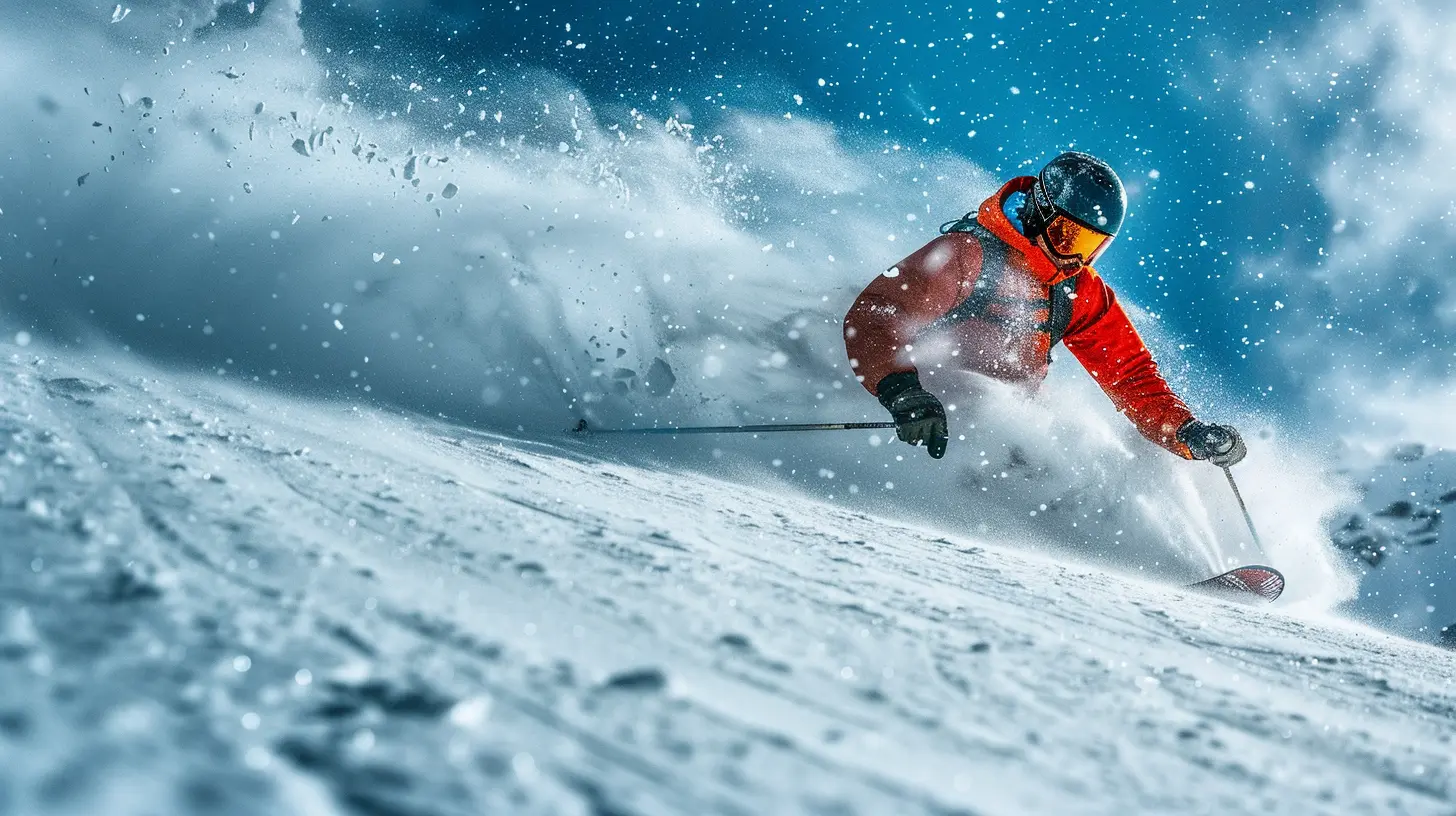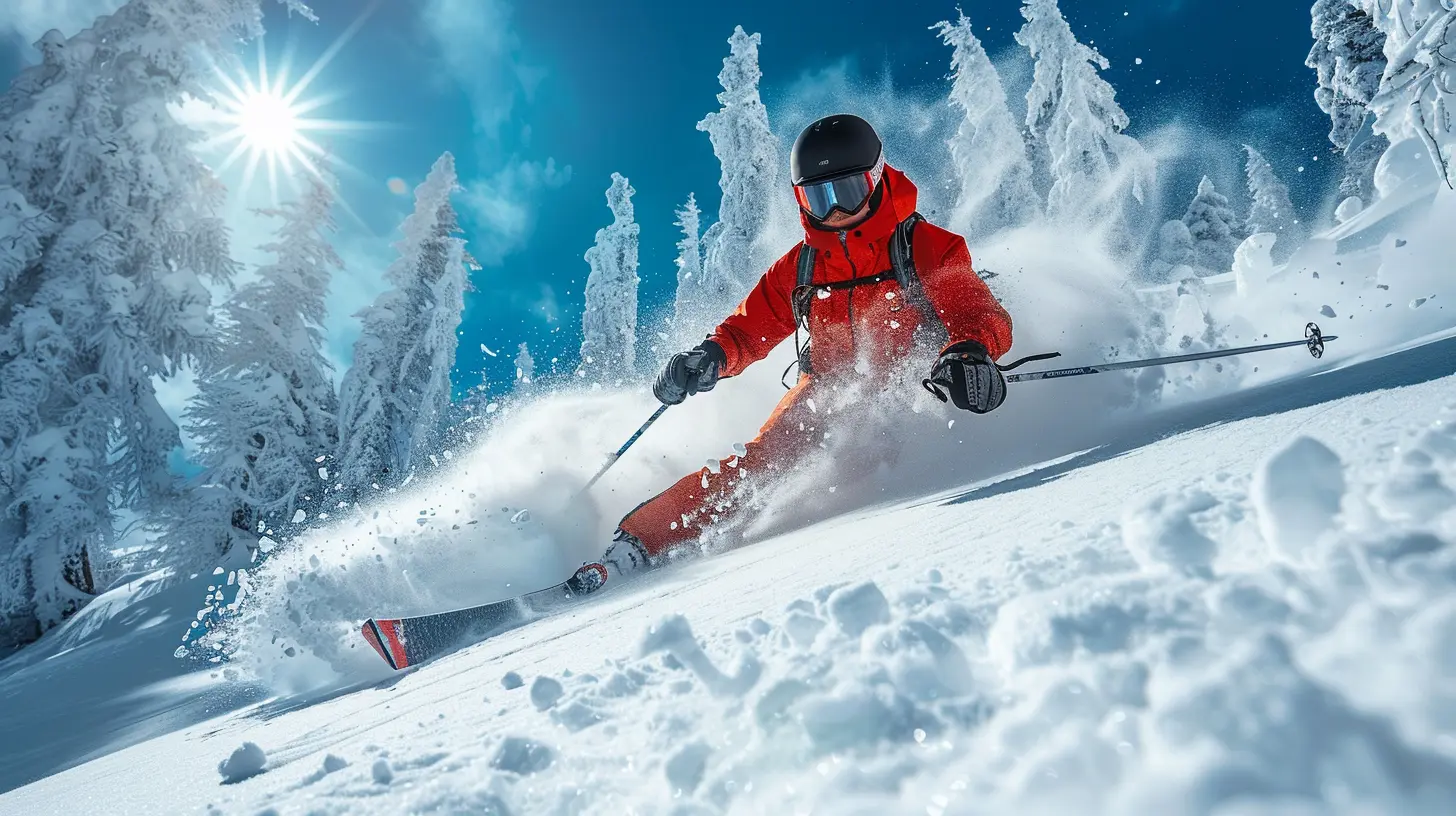How to Stay Warm Without Overheating on the Slopes
31 May 2025
Winter is coming... and for all you skiing and snowboarding fanatics out there, that means one thing—time to hit the slopes! But let's be real for a second. As much as we love carving through fresh powder and feeling that crisp mountain air on our faces, staying warm without turning into a human furnace is no easy feat.
It’s a battle: on one hand, you don’t want to freeze. On the other, you don’t want to feel like you’re in a sauna halfway down the mountain. So, how do you find that sweet spot of staying warm without overheating? Whether you're a seasoned pro or a newbie, we’ve got you covered (literally and figuratively) with tips and tricks to help you stay comfortable on the slopes.
Let’s dive into it!

Understanding the Body's Temperature Regulation on the Slopes
Before we get into the nitty-gritty of gear and layering, let’s talk about how your body works in cold conditions. When you're skiing or snowboarding, you're constantly moving, and that movement generates heat. But, at the same time, you're exposed to cold air and wind, which can quickly make you feel chilled.Your body has a natural thermostat: it works to maintain a core temperature around 98.6°F (37°C). When you’re moving, your muscles are working hard, and they produce heat. If you’re not careful, the heat can build up, causing you to sweat. And if that sweat gets trapped in your clothing, it can cool down and leave you feeling cold and clammy. Not fun, right?
So, the goal is to keep that balance—stay warm enough to be comfortable, but not so warm that you start sweating like you’re running a marathon.

Layering: The Secret to Temperature Control
Wanna know the key to staying warm without overheating? It’s all about layering. Think of your clothing like a sandwich—each layer plays a specific role in keeping you comfortable, just like the ingredients in a delicious burger. ?Here’s how you should think about layering:
1. The Base Layer: Your Second Skin
The base layer is the one closest to your skin, and it’s probably the most important part of your layering system. This layer's job is to wick away moisture (aka sweat) from your body so you don't get cold and clammy.Materials to Look For:
- Merino Wool: This natural fiber is fantastic at wicking moisture away while also keeping you warm. It’s soft, not itchy, and it doesn’t stink after a long day on the slopes. Bonus!
- Synthetic Fabrics: Think of materials like polyester or polypropylene. They’re also great at moisture-wicking and tend to be more affordable than merino wool.
What to Avoid:
- Cotton: Just say no to cotton. It soaks up sweat like a sponge and doesn’t dry quickly. You’ll end up cold, wet, and miserable.
2. The Mid-Layer: Trapping the Heat
The mid-layer is your insulation. Its job is to trap the heat your body generates and keep it close to your body. Think of it like a cozy blanket, but without the bulk.Materials to Look For:
- Fleece: Lightweight, breathable, and warm. Plus, it doesn’t weigh you down.
- Down or Synthetic Insulation: If it’s really cold, down or synthetic insulated jackets are a great option. Down is super warm, but it’s not great if it gets wet. Synthetic insulation, on the other hand, will still keep you warm even if it gets a little damp.
3. The Outer Layer: Shielding You From the Elements
The outer layer is like your armor—it protects you from wind, snow, and rain. This layer doesn’t need to be super warm on its own, but it should be waterproof and windproof to keep the elements out.Materials to Look For:
- Gore-Tex or Similar: These materials are both waterproof and breathable, which is crucial. You want to keep the snow out, but you don’t want to trap sweat inside.
Pro Tip: Look for outer layers with ventilation zippers (also called pit zips) so you can dump excess heat as you start to warm up.

Smart Layering Techniques
Knowing what clothes to wear is half the battle. The other half? Knowing how to layer them like a pro. Here are some tips to make sure you’re doing it right:1. Start Cold
This might sound counterintuitive, but you actually want to start your ski day feeling a little chilly. Why? Because as soon as you start moving, your body will heat up. If you’re already warm when you start, you’re going to overheat fast.2. Adjust on the Fly
Your body temperature will fluctuate throughout the day depending on your activity level and the weather. Got a long hike to the top? You might want to unzip or remove a layer to prevent overheating. Taking the lift back up? Zip up to lock in that warmth.3. Ventilation is Key
Most quality ski jackets and pants come with vents. These are a game-changer when it comes to regulating your temperature. If you’re feeling too warm, open up those vents to let heat escape without having to remove a layer.
Choosing the Right Accessories
It’s not just your torso that needs attention. Your extremities—head, hands, and feet—are the first parts of your body that will feel the cold. Here’s how to keep them warm without sweating buckets.1. Head and Face
We lose a lot of heat through our heads, so it’s crucial to keep your noggin warm without overheating.- Helmet: Always wear a helmet for safety, but it also traps heat. Bonus!
- Balaclava or Neck Warmer: These are great for keeping your face warm, but if you start to overheat, you can easily pull them down.
- Goggles: Not only do goggles protect your eyes, but they also keep your face warm by blocking wind and snow. Look for goggles with anti-fog features to avoid them steaming up.
2. Hands
Cold hands can ruin a day on the slopes. But sweaty hands? Equally annoying. Here’s how to keep them comfy:- Gloves vs. Mittens: Mittens are generally warmer because your fingers share heat. But gloves give you more dexterity. If you tend to overheat, go for gloves with removable liners so you can adjust the warmth as needed.
- Heated Gloves: If you’re someone whose hands always get cold, consider investing in a pair of heated gloves. They have battery-powered heating elements that keep your hands toasty.
3. Feet
Keeping your feet warm without turning them into sweaty messes is an art form. Here’s how to master it:- Wool Socks: Just like with your base layer, avoid cotton socks. Wool socks (especially merino wool) will keep your feet warm and dry. Look for medium-thickness socks—too thick, and they might cut off circulation.
- Boot Liners: Some ski and snowboard boots come with removable liners. Make sure they’re dry before you head out for the day, and consider getting boot heaters if your toes tend to get cold.
Hydration and Nutrition
Here’s something many people overlook: staying hydrated is crucial for temperature regulation. When you're dehydrated, your body has a harder time staying warm. So, drink plenty of water throughout the day!And don’t forget to fuel up. Your body burns a lot of calories when you’re skiing or snowboarding, and if you’re running on empty, you’ll feel colder. Pack some snacks like energy bars, nuts, or trail mix to keep your energy levels up.
Keep an Eye on the Weather
This might sound obvious, but always check the weather report before you head out. If it’s going to be a mild day, you can go lighter on the layering. But if a storm’s rolling in, you’ll want to be prepared with extra insulation.Also, keep in mind that conditions can change quickly in the mountains. Even if it’s sunny when you start, a cold front could move in by the afternoon. It’s always better to have an extra layer and not need it than vice versa.
Wrapping Up
Staying warm without overheating on the slopes is a balancing act, but it’s totally doable. By layering smartly, choosing the right materials, and paying attention to your body, you can stay comfortable all day long—whether you're carving down black diamonds or cruising on a beginner slope.Now, go grab your gear, hit the slopes, and enjoy the ride. Don’t forget to take a hot chocolate break (or two) along the way!
all images in this post were generated using AI tools
Category:
SkiingAuthor:

Frankie Bailey
Discussion
rate this article
3 comments
Quorra Stone
Great tips! Layering strategically and choosing breathable fabrics are key to staying comfortable while skiing.
June 5, 2025 at 11:31 AM

Frankie Bailey
Thank you! I'm glad you found the tips helpful. Staying comfortable is all about the right layers and fabrics!
Korian McVey
Stay cozy and focused on the slopes! Dressing smartly ensures you enjoy every moment of winter fun without compromising comfort. Happy skiing!
June 3, 2025 at 4:59 AM

Frankie Bailey
Thank you! Staying warm while maintaining comfort is key to enjoying the slopes. Happy skiing to you too!
Mackenzie Blair
Great tips for winter comfort!
June 2, 2025 at 10:52 AM

Frankie Bailey
Thank you! I'm glad you found the tips helpful for staying cozy while enjoying the slopes!



